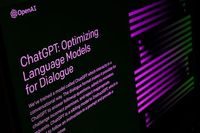Since its launch in March 2023, GPT-4 has made waves in the artificial intelligence landscape, marking a significant evolution in large language models. With its advanced language understanding, reasoning capabilities, and groundbreaking multimodal functionalities, it has set a new standard for AI applications. Following closely on its heels, GPT-4o debuted in May 2024, designed to enhance and expand upon its predecessor's capabilities.
GPT-4 is constructed as a Mixture of Experts (MoE) model, a departure from the dense architecture of its predecessor, GPT-3. This innovative structure comprises 16 expert networks, each with around 111 billion parameters, culminating in a staggering total of approximately 1.8 trillion parameters. This architecture allows for dynamic token routing during inference, which not only boosts performance but also significantly reduces computational costs.
The training phase for GPT-4 involved a colossal dataset of 13 trillion tokens, with text-based data undergoing two epochs and code-based data four epochs. The training utilized 25,000 A100 GPUs over a span of 90 to 100 days, resulting in an estimated cost of around $63 million. This substantial investment underscores the complexity and resource demands of developing such sophisticated AI.
In terms of inference, GPT-4 operates on clusters of 128 GPUs, with each node managing about 130 billion parameters. The model’s multimodal capabilities enable it to process both text and visual inputs, a feature that was fine-tuned on approximately 2 trillion tokens after its initial text-based training. This multimodal functionality is crucial for tasks that require a blend of textual and visual understanding, enhancing the model's versatility.
One of the standout features of GPT-4 is its Chain of Thought technology, which allows the model to break down complex problems into manageable steps. This capability mirrors human reasoning, enabling GPT-4 to tackle multi-step problems more effectively. Furthermore, the model employs Reinforcement Learning with Human Feedback (RLHF) to refine its responses, aligning them more closely with user expectations.
Security is another critical aspect of GPT-4's design. OpenAI has implemented a robust security pipeline that includes security-related RLHF training prompts and a Rule-Based Reward Model (RBRM). This system ensures that the model adheres to predefined safety guidelines, reducing the likelihood of generating harmful content. Additionally, GPT-4 incorporates a multimodal hallucination detection mechanism to minimize the risk of producing misleading or irrelevant information.
Despite its advancements, GPT-4 is not without limitations. While it excels in many areas, it still struggles with certain tasks requiring human-like common sense and can generate misleading responses when faced with unfamiliar queries. OpenAI acknowledges that the model’s black-box nature raises concerns about its potential to produce biased or harmful content.
In 2024, OpenAI released GPT-4o, which builds upon the foundation laid by GPT-4. This upgraded model features native multimodal support, enabling it to handle text, images, audio, and video inputs seamlessly. The introduction of GPT-4o has led to a remarkable reduction in response times, dropping from five seconds to just 320 milliseconds, which greatly enhances user experience during real-time interactions.
Financially, GPT-4o presents a more cost-effective solution for developers, with its API costs being significantly lower than those of GPT-4. Notably, the input token cost for GPT-4o is only one-sixth of that of GPT-4, making it an attractive option for businesses seeking to integrate AI into their operations.
OpenAI's growth trajectory has also been impressive. ChatGPT, powered by GPT models, has seen its user base swell to 300 million weekly active users as of late 2024, a testament to its widespread adoption and utility. This growth is attributed to the introduction of new features, including GPT-4o, which has further solidified OpenAI’s position in the competitive AI landscape.
However, OpenAI has faced challenges along the way, including internal shifts in leadership and legal hurdles. Notably, the company has been embroiled in lawsuits alleging copyright infringement, as well as facing scrutiny over its transition to a for-profit model. These issues underscore the complexities of operating in the rapidly evolving AI sector.
Looking ahead, OpenAI continues to innovate, with plans for future models that integrate various technologies under one umbrella. CEO Sam Altman has hinted at the potential release of GPT-5, which aims to unify the company's advancements into a single, powerful model. This strategic direction indicates OpenAI's commitment to remaining at the forefront of AI development.
In summary, the evolution from GPT-4 to GPT-4o showcases significant advancements in AI capabilities, particularly in multimodal processing and efficiency. While challenges remain, OpenAI's dedication to enhancing its models and addressing security concerns positions it as a leader in the AI industry, with a keen eye on future innovations.




